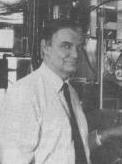A New Non-Doppler Redshift
Year: 1988
It is known that many astronomical observations cannot be explained by means of the ordinary Doppler shift interpretation. The mere examination of a recent catalog of objects having very large redshifts shows that among 109 quasi-stellar objects for which both absorption and emission lines could be measured, the value of the absorption redshift of a given object is always different from the one measured in emission for the same object. It is clear that such results cannot be explained as being due solely to a Doppler redshift.
A new mechanism must be looked for, in order to explain those inconsistent redshifts and many other observations related to the ?redshift controversy?.
It is possible to calculate a very slight inelastic scattering phenomenon compatible with observed redshifts using electromagnetic theory and quantum mechanics, without the need to introduce ad hoc physical hypotheses.
A careful study of the mechanism for the scattering of electromagnetic radiation by gaseous atoms and molecules shows that an electron is always momentarily accelerated as a consequence of the momentum transfer imparted by a photon. Such an acceleration of an electric charge produces bremsstrahlung.
It is shown in the present work that this phenomenon has a very large cross section in the forward direction and that the energy lost by bremsstrahlung causes a slight redshift. It is also demonstrated that the relative energy loss of the electromagnetic wave for blackbody radiation, such as for many celestial objects, follows the same ?Dn/n = constant? law as if it were a Doppler law.
This redshift appears indistinguishable from the Doppler shift except when resonant states are present in the scattering gas. It is also shown that the lost energy should be detectable mostly as low frequency radio waves. The proposed mechanism leads to results consistent with many redshifts reported in astrophysical data.


